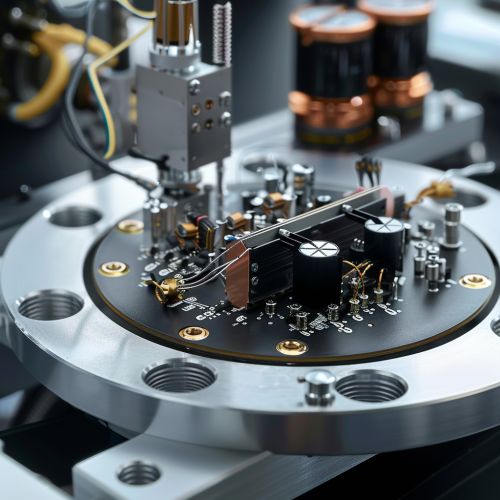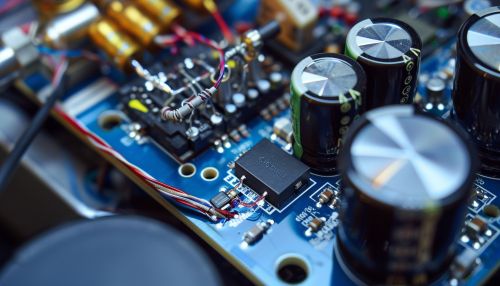Active Transducer
Introduction
An active transducer is a type of transducer that converts one form of energy into another, with the requirement of an external power source. This is in contrast to passive transducers, which do not require an external power source. Active transducers are widely used in various fields such as engineering, medical, and scientific research due to their high sensitivity and precision.


Principle of Operation
The operation of an active transducer is based on the principle of energy conversion. It requires an external power source to function, which is used to amplify the signal produced by the transducer. The input energy, which can be mechanical, thermal, or any other form of energy, is converted into an electrical signal. This electrical signal is then amplified and can be easily measured or recorded.
Types of Active Transducers
There are various types of active transducers, each with its unique characteristics and applications.
Piezoelectric Transducers
Piezoelectric transducers are a type of active transducer that converts mechanical energy into electrical energy. They operate on the principle of piezoelectric effect, where certain materials generate an electric charge in response to applied mechanical stress.
Thermocouple
A thermocouple is a type of active transducer used for temperature measurement. It works on the principle of the Seebeck effect, where a voltage is produced due to the temperature difference between two different metals.
Photovoltaic Cell
Photovoltaic cells, also known as solar cells, are active transducers that convert light energy into electrical energy. They operate on the principle of the photovoltaic effect.
Applications of Active Transducers
Active transducers have a wide range of applications in various fields.
Engineering
In the field of engineering, active transducers are used in control systems, automation, and instrumentation. For example, piezoelectric transducers are used in ultrasonic testing equipment to detect flaws in materials.
Medical
In the medical field, active transducers are used in various diagnostic and therapeutic devices. For example, ultrasonic transducers are used in ultrasound imaging systems to generate images of the internal structures of the body.
Scientific Research
Active transducers are also used in scientific research for various purposes, such as measuring physical quantities like temperature, pressure, and force.
Advantages and Disadvantages of Active Transducers
Like any other device, active transducers have their advantages and disadvantages.
Advantages
Active transducers have high sensitivity and can detect small changes in the input. They also have a high signal-to-noise ratio, which makes them ideal for precision measurements.
Disadvantages
One of the main disadvantages of active transducers is that they require an external power source to function. This can limit their use in certain applications where power supply is a concern. They are also more susceptible to noise and interference compared to passive transducers.
Conclusion
Active transducers play a crucial role in various fields due to their high sensitivity and precision. Despite their limitations, they continue to be widely used in engineering, medical, and scientific research.
